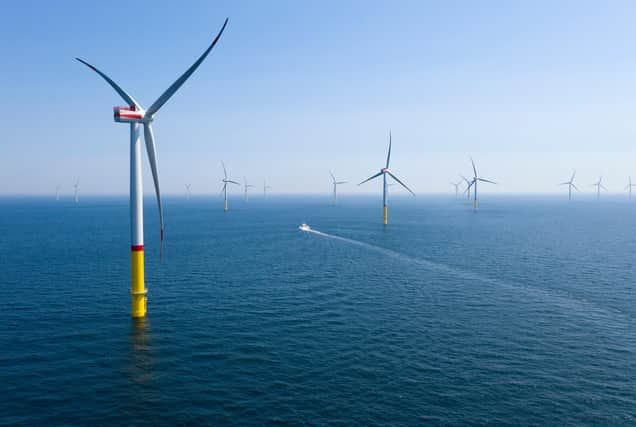Ambitious target set for hydrogen production - Amy Stirling


The document, which is intended as a "clear signal of intent" for the industry and investors, sets an initial target of five gigawatts (GW) of renewable and low carbon domestic hydrogen production by 2030, enough to power the equivalent of 1.8 million homes.
The ambition is far-reaching with the aim of not only establishing sufficient hydrogen production to meet domestic market demand, but to position Scotland in the 2030s as an exporter of blue and green hydrogen to Northern Europe.
Advertisement
Hide AdAdvertisement
Hide AdThe policy statement is commendable. However, hydrogen production needs to ramp up exponentially to meet that ambition. Blue and green hydrogen production are proven technologies, and what industry and investors need are market incentives and a clear regulatory framework to stimulate the market.
'Grey' hydrogen is traditionally produced from methane using the steam-methane reforming process, which produces carbon dioxide (CO2) as a by-product. The process can be combined with carbon capture and storage (CCS), where it is known as 'blue' hydrogen. 'Green' hydrogen, which produces no CO2, uses renewable energy combined with electrolysis, however, it is currently considerably more expensive than blue hydrogen.
The Scottish Government intends to allocate £100m of its £180m Emerging Energy Technologies Fund to the hydrogen sector over the next five years. The policy statement sets out plans to harness Scotland's existing natural resources, skills and supply chain to develop low carbon hydrogen production at scale by the mid-2020s, linked to CCS, as well as the emergent role of hydrogen in the sustainable decarbonisation of critical industry functions and processes, transport and heat in buildings.
In the longer term, the statement targets larger scale production of renewable hydrogen from offshore wind. The "most ambitious" export scenario in the statement is based on a high renewable capacity delivered through the ScotWind seabed leasing round, which recently opened to applicants.
An “opportunity assessment”, published alongside the statement, found the costs lowest for offshore hydrogen production coupled with a commercial scale offshore wind farm. ScotWind presents a real opportunity to capitalise on Scotland's extensive renewable resources and to use that clean energy to move beyond decarbonising the electricity sector.
In the future, we may see a dedicated renewable supply for hydrogen production, which could go some way towards mitigating grid constraints, particularly in more remote parts of the country. There are, however, outstanding issues that need to be addressed to deliver offshore wind at the scale and pace required, particularly the approach to environmental and habitats assessments and coordinated transmission.
Some of the barriers to clean hydrogen production at scale will require action at the UK level, according to the policy statement. The Scottish Government is calling for the UK government to address regulatory barriers, including amending the gas regulations to allow for greater blending of hydrogen, and to increase support for renewable electricity generation to meet future green hydrogen demand.
The UK Government is expected to publish its own hydrogen policy statement ahead of the COP26 conference in Glasgow in November. Its energy White Paper set a similar UK target of 5GW of low-carbon hydrogen production by 2030 and committed to the creation of a Net Zero Hydrogen Fund of £240m of capital co-investment, to be provided out to 2024-25.
Advertisement
Hide AdAdvertisement
Hide AdThe Scottish Government intends to publish an action plan later this year setting out how its hydrogen policies will be implemented, including how the £100m in funding will be allocated to research, innovation, development and demonstration of hydrogen production.
Amy Stirling, Associate and specialist in energy and infrastructure at Pinsent Masons
Comments
Want to join the conversation? Please or to comment on this article.